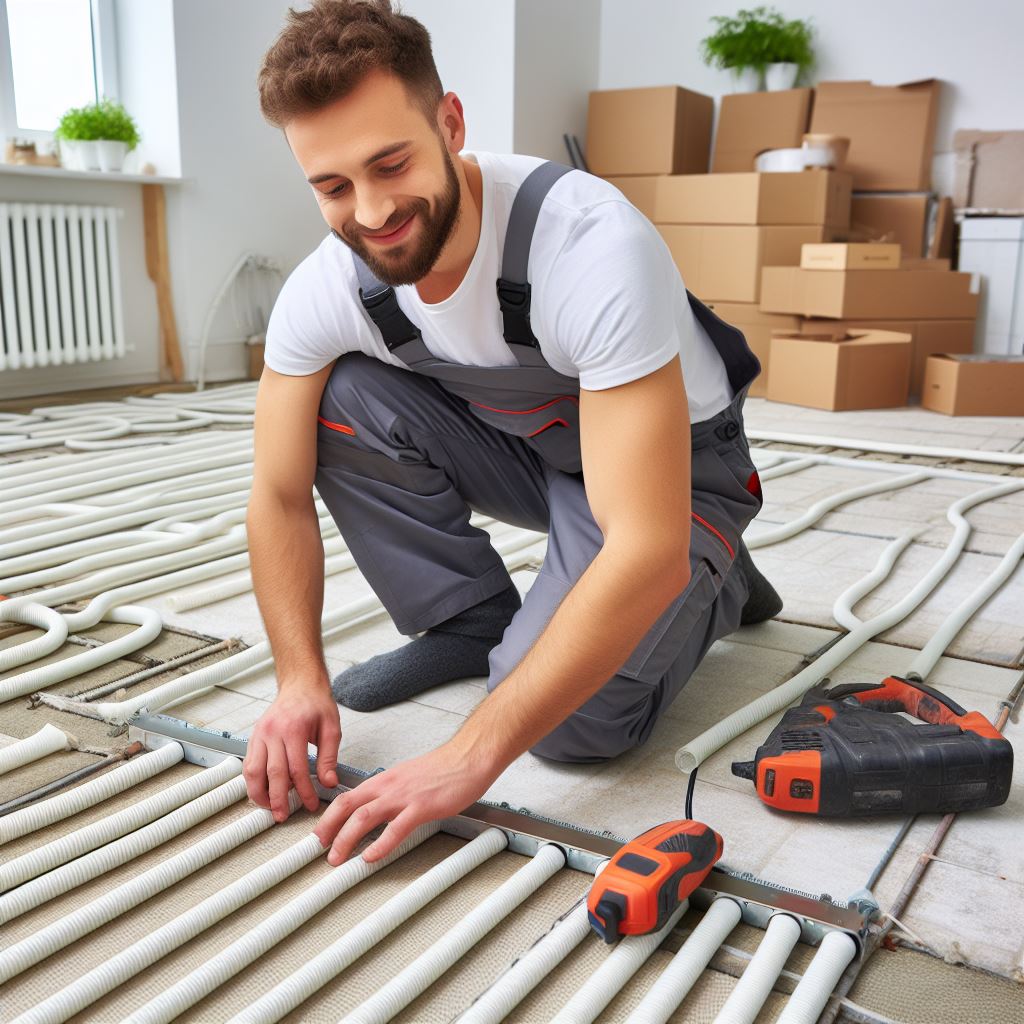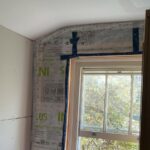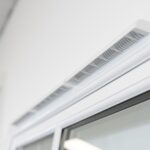In Energy Efficiency Measures, Retrofit by Robert Wheeler / 8 May 2024 / 0 comments

Retrofit underfloor heating has gained significant popularity as a cost-effective and efficient solution for enhancing the comfort and energy efficiency of existing buildings. Unlike traditional radiator systems, underfloor heating distributes warmth evenly across the floor, providing a comfortable and cozy environment.
This blog post explores the benefits, considerations, installation process, maintenance tips, and cost analysis of retrofitting underfloor heating. Whether you are a homeowner looking to upgrade your heating system or a building professional seeking to offer this service, this comprehensive guide will equip you with the necessary knowledge to make informed decisions and ensure successful retrofit underfloor heating projects.
Introduction to Retrofit Underfloor Heating
What is Retrofit Underfloor Heating?
Retrofit underfloor heating is a brilliant solution for those wanting to upgrade their home’s heating system without the hassle of replacing existing floors. It involves installing underfloor heating pipes or mats into an already constructed space, making it a popular choice for renovations or home improvement projects.
Advantages of Retrofitting Underfloor Heating
Retrofitting underfloor heating comes with a range of benefits that make it an enticing option for homeowners. Firstly, it provides enhanced comfort by evenly distributing heat throughout the floor, resulting in a warm and cozy living space. Secondly, it can significantly improve energy efficiency by efficiently heating the room and reducing heat loss. Additionally, retrofit underfloor heating eliminates the need for bulky radiators, creating more space and allowing for more creative interior design options.
Benefits of Retrofit Underfloor Heating
Enhanced Energy Efficiency
Retrofit underfloor heating systems are designed to operate at lower water temperatures compared to traditional radiators. This lower operating temperature significantly reduces energy consumption and, subsequently, your heating bills. By using radiant heat, underfloor heating warms up the room from the floor upwards, ensuring heat is distributed evenly without creating temperature variances in the space.
Improved Comfort and Air Quality
One of the greatest advantages of retrofit underfloor heating is the luxurious comfort it provides. Say goodbye to cold feet and hello to toasty warmth underfoot. Additionally, underfloor heating eliminates the problem of cold spots and uneven heating common with radiators, making your living space more comfortable overall. Moreover, it helps reduce the circulation of dust and allergens present in the air, leading to improved indoor air quality.
Space-saving and Aesthetic Advantages
Radiators can often be bulky and limit furniture placement. Retrofitting underfloor heating frees up valuable wall space, allowing for more flexibility in room layout and décor. With no radiators to work around, you can maximize the use of space and create a more aesthetically pleasing environment. Whether you have a modern, minimalist design or love traditional aesthetics, underfloor heating offers a seamless heating solution without compromising on style.
Considerations before Installing Retrofit Underfloor Heating
Evaluating Existing Flooring and Subfloor
Before diving into retrofit underfloor heating, it’s important to assess the suitability of your existing flooring and subfloor. While retrofit systems can work with various floor types, it’s essential to consider factors such as insulation properties, thickness, and stability. Some flooring materials may require additional insulation layers or adjustments to ensure optimal performance.
Assessing Structural Integrity and Load Capacity
Underfloor heating systems add weight to the floor, so it’s crucial to assess the floor’s structural integrity and load capacity. Consult with a structural engineer or building professional to ensure that your floor can support the additional load without compromising safety or causing structural damage.
Determining Compatibility with Existing Heating System
Before proceeding with retrofit underfloor heating, it’s important to assess compatibility with your existing heating system. Consider factors such as the heat source, heat output, and water temperature settings. Retrofit systems can often work in conjunction with various heating systems, including gas boilers, heat pumps, or electric systems, but it’s essential to ensure they can work seamlessly together.
Step-by-Step Guide for Retrofitting Underfloor Heating
Pre-installation Preparation
Start by thoroughly cleaning the existing floor and removing any debris. Ensure that the subfloor is level and in good condition. If necessary, make any repairs or adjustments to ensure a smooth and stable surface for the underfloor heating system.
Choosing the Right Underfloor Heating System
Select a retrofit underfloor heating system that suits your requirements and existing floor type. This can range from pipe systems that involve embedding pipes into the floor screed to electric mat systems that can be installed directly under the flooring. Consult with professionals or experts to determine the best system for your specific needs.
Installation Process
Follow the manufacturer’s instructions and guidelines for installing the underfloor heating system. This typically involves laying the pipes or mats evenly across the floor surface and connecting them to a manifold for water-based systems. Electric systems often involve securing the mats to the subfloor and connecting them to a thermostat.
Connecting to Existing Heating System
If retrofitting a water-based underfloor heating system, connect the manifold to your existing heating system. This may involve adjusting settings, installing control valves, or connecting pipes. It’s advisable to seek professional assistance for proper integration to ensure optimum performance and efficiency.
With these steps covered, you’re well on your way to enjoying the benefits of retrofit underfloor heating in your home. So sit back, relax, and let the warmth radiate from below, providing you with comfort, energy efficiency, and a stylish living space.
Best Practices for Retrofit Underfloor Heating Installation
Ensuring Proper Insulation
When installing underfloor heating in an existing space, it’s crucial to ensure proper insulation. Without proper insulation, the heat generated by the system can escape downwards instead of heating the room. This not only reduces the efficiency of the system but also increases energy consumption and costs. Make sure to insulate the floor properly by adding a layer of high-quality insulation material, such as foam or foil-backed insulation boards, before installing the underfloor heating.
Correct Placement of Underfloor Heating Pipes or Electric Mats
Proper placement of underfloor heating pipes or electric mats is essential for optimal heat distribution. When retrofitting underfloor heating, consider the layout of the room and strategically place the heating elements to ensure even heat distribution. Avoid placing any heating elements under heavy furniture or kitchen appliances, as this can block the heat flow. Also, ensure that the heating elements are evenly spaced to provide consistent warmth throughout the room.
Precision in Temperature Control and Zoning
To maximize comfort and energy efficiency, precision in temperature control and zoning is key. Retrofit underfloor heating systems often come with individual thermostats for different areas or rooms. Take advantage of this zoning capability by setting different temperatures for different zones based on your preferences and usage patterns. This allows you to save energy by heating only the areas that need it and adjusting temperatures according to specific needs.
Maintenance and Troubleshooting Tips for Retrofit Underfloor Heating Systems
Regular Cleaning and Maintenance
Like any heating system, retrofit underfloor heating requires regular cleaning and maintenance to ensure optimal performance. Vacuum or sweep the floor regularly to remove any debris that may obstruct heat transfer. Inspect the system for any leaks, damaged pipes, or electrical issues. It’s also a good idea to schedule professional maintenance checks to ensure everything is in proper working order.
Troubleshooting Common Issues
Despite being a reliable heating solution, retrofit underfloor heating systems may encounter common issues such as uneven heating, cold spots, or control malfunctions. If you experience any of these problems, first check the thermostat settings and ensure they are properly calibrated. If the issue persists, inspect the pipes or electric mats for any damage or blockages. Additionally, check the insulation under the floor for any gaps or areas of poor coverage that may affect heat retention.
Professional Servicing and Repairs
While some minor troubleshooting can be done by homeowners, it’s important to rely on professional servicing and repairs for more complex issues. If you’re uncertain about how to fix a problem or if the issue persists after your troubleshooting attempts, it’s best to call in a professional. They have the expertise and tools to diagnose and resolve any underlying issues, ensuring your retrofit underfloor heating system operates efficiently and safely.
Cost Analysis and Return on Investment for Retrofit Underfloor Heating
Initial Cost Considerations
Before committing to retrofit underfloor heating, it’s essential to consider the initial costs. Retrofitting may involve additional expenses such as removing existing flooring, installing insulation, and modifying the existing heating system. However, it’s important to weigh these costs against the long-term benefits and potential energy savings that underfloor heating can provide.
Energy Savings and Payback Period
One of the primary advantages of retrofit underfloor heating is its energy efficiency. By heating from the floor up, it allows for more even and consistent warmth, reducing the reliance on traditional heating methods. This can lead to significant energy savings over time. Calculate the payback period by comparing the estimated energy savings with the initial costs to determine how long it will take to recoup the investment.
Long-term Benefits and ROI Calculation
Beyond energy savings, retrofit underfloor heating offers several long-term benefits. It increases comfort levels by eliminating cold spots and reducing reliance on radiators or other heating sources. It can also add value to your home and appeal to potential buyers. To calculate the return on investment, factor in not just the energy savings, but also the improved comfort, potential home value increase, and the longevity of the system.
Case Studies: Successful Retrofit Underfloor Heating Projects
Residential Retrofit Underfloor Heating Project
In a residential retrofit underfloor heating project, a family in a cold climate transformed their chilly kitchen into a cozy space. By installing underfloor heating beneath their existing tile floor, they eliminated the need for additional radiators and improved warmth throughout the room. The precise temperature control allowed them to create a comfortable environment, and they reported energy savings and increased satisfaction with their newly heated kitchen.
Commercial Retrofit Underfloor Heating Project
A commercial retrofit underfloor heating project saw a small office space upgrade to a more efficient and comfortable working environment. By retrofitting underfloor heating, the office no longer had to rely solely on central heating, allowing better control over temperature variations. This change improved employee satisfaction, reduced energy consumption, and demonstrated the office’s commitment to sustainability, impressing clients and visitors alike.
Conclusion
In conclusion, retrofit underfloor heating offers a range of benefits, from improved energy efficiency to enhanced comfort and aesthetics. By following the proper installation procedures, considering important factors before retrofitting, and maintaining the system regularly, you can enjoy the advantages of underfloor heating in your existing space. While the initial investment may vary, the long-term savings and return on investment make retrofit underfloor heating a worthwhile consideration. With the information provided in this article, you can confidently explore the possibilities of retrofitting underfloor heating and transform your space into a comfortable and efficient haven.
Retrofit Underfloor Heating FAQs
Yes, retrofit underfloor heating can be installed under various types of flooring, including tile, laminate, hardwood, and even carpet. However, it is important to consider the specific requirements and compatibility of the underfloor heating system with your chosen flooring material to ensure optimal performance.
Absolutely! Retrofit underfloor heating systems are designed to be installed without extensive renovations. They can be easily incorporated into existing spaces with minimal disruption. However, it is important to evaluate the condition of the subfloor and consider any necessary modifications to accommodate the underfloor heating system.
On the contrary, retrofit underfloor heating can actually help reduce your energy bills. These systems are highly efficient, providing even heat distribution and utilizing lower operating temperatures compared to traditional radiator systems. The improved energy efficiency can lead to significant savings in the long run, offsetting the initial investment.
While retrofitting underfloor heating may seem like a DIY project, it is recommended to hire a professional for the installation process. A trained and experienced installer will have the expertise to assess your specific needs, ensure proper system selection and installation, and provide valuable advice to optimize the performance and longevity of your underfloor heating system.
Ready to discuss your regeneration project and how NXTGEN Futures Ltd can elevate it with expert retrofit? Contact us today!
Latest Retrofit Posts
- What a retrofit-first approach offers the UKRetrofitting is like giving your home a makeover to make it more energy-efficient, comfortable, and healthy. The retrofit-first approach prioritizes upgrading existing buildings over new construction to tackle climate change and improve living conditions. Definition of Retrofitting Retrofitting involves making… Read more: What a retrofit-first approach offers the UK
- What is internal wall insulation?Internal wall insulation is a crucial component of creating a comfortable and energy-efficient living space. By insulating the walls within a building, homeowners can experience benefits such as improved thermal performance, reduced energy bills, and enhanced acoustic comfort. Understanding the… Read more: What is internal wall insulation?
- What is a retrofit assessor?Retrofit assessors play a crucial role in the sustainability and energy efficiency of buildings by evaluating and identifying opportunities for improvement. This blog post aims to provide an in-depth understanding of the responsibilities, qualifications, and benefits associated with being a… Read more: What is a retrofit assessor?
- What is a retrofit assessment in the UK?Retrofit assessments play a crucial role in the sustainable development of buildings in the UK, helping to improve energy efficiency, reduce carbon emissions, and enhance overall building performance. By evaluating existing structures and identifying opportunities for upgrades and enhancements, retrofit… Read more: What is a retrofit assessment in the UK?
- Retrofit and Energy Efficiency in Historic BuildingsHistoric buildings are not only architectural treasures but also valuable cultural assets that contribute to our sense of history and identity. However, many of these buildings often suffer from poor energy efficiency, leading to excessive energy consumption and high operating… Read more: Retrofit and Energy Efficiency in Historic Buildings
- What is retrofitting in construction?Retrofitting in construction is a crucial process that involves upgrading existing buildings or structures to meet modern standards of safety, energy efficiency, and functionality. This blog post explores the concept of retrofitting, its importance, various techniques used in the industry,… Read more: What is retrofitting in construction?
- CASE STUDY: Curtis WayDelivering a Holistic Retrofit Solution with EWI & Solar Energy Project Overview NXTGEN Futures Ltd. successfully completed a large-scale retrofit project on Curtis Way, Berkhamsted, England, UK. This case study showcases our expertise in External Wall Insulation (EWI), retrofit coordination,… Read more: CASE STUDY: Curtis Way
- What happens to a building during retrofitting?Building retrofitting is a vital process that involves making significant modifications and improvements to existing structures to enhance their efficiency, functionality, and sustainability. In this blog post, we will delve into the intricate workings of building retrofitting, exploring the various… Read more: What happens to a building during retrofitting?
- UK Government Retrofit Scheme: Making Energy Efficiency Cool AgainIntroduction to the UK Government Retrofit Scheme Background of the Retrofit Scheme Picture this: you’re sitting at home, snuggled up in your favourite blanket, enjoying a cup of tea, when suddenly you feel a draft. Not cool, right? Well, that’s… Read more: UK Government Retrofit Scheme: Making Energy Efficiency Cool Again
- What are Retrofit Trickle Vents?Improving indoor air quality and enhancing energy efficiency are key priorities for many homeowners. In this article, we will explore the concept of retrofit trickle vents and their role in achieving these goals. Trickle vents are small, adjustable openings integrated… Read more: What are Retrofit Trickle Vents?
- Retrofit Underfloor HeatingRetrofit underfloor heating has gained significant popularity as a cost-effective and efficient solution for enhancing the comfort and energy efficiency of existing buildings. Unlike traditional radiator systems, underfloor heating distributes warmth evenly across the floor, providing a comfortable and cozy… Read more: Retrofit Underfloor Heating
- Retrofit LondonRetrofitting has emerged as a crucial solution in transforming the landscape of cities, and London is no exception. As a global hub of culture, commerce, and innovation, London faces the pressing challenge of reducing its carbon footprint while ensuring sustainable… Read more: Retrofit London












